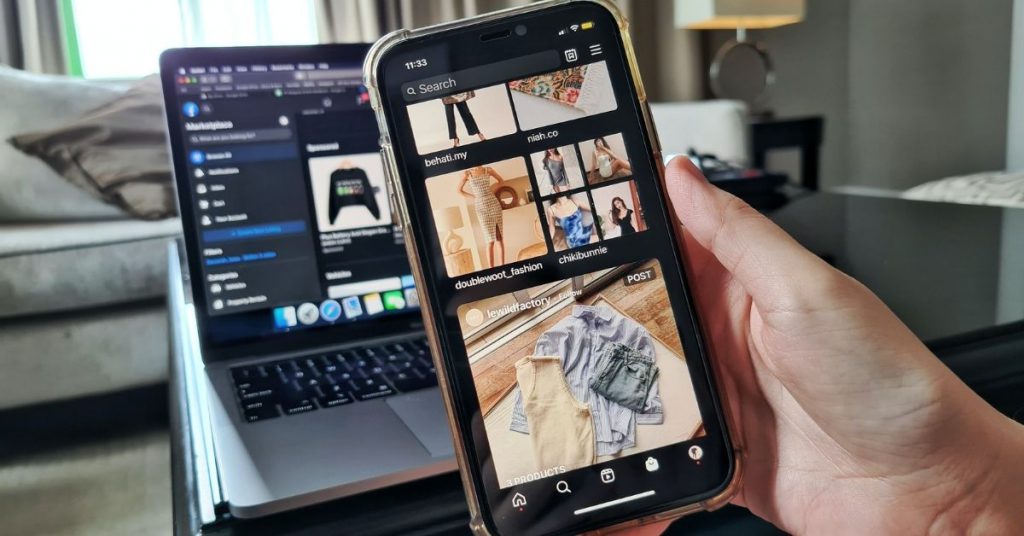I recently ran into an ad by a web design company that talked about how having a website adds to a brand’s legitimacy because it makes a brand more trustworthy.
They usually talk about how having a website makes a brand look more professional or credible, which is something you can find in almost every article that brings up this topic.
But in this day and age, it’s becoming quite a norm for people to shop from Instagram stores or even merchants on Shopee or Lazada, a lot of whom don’t even have websites of their own.
Now, businesses may choose not to have a website for plenty of reasons like how getting a professionally designed one costs too much, or simply because they find it unnecessary, and it’s often argued that this unwillingness to invest in a website will cost them their legitimacy.
But here are 6 reasons why we’d argue otherwise.
1. Websites Could Have Biased Ratings
On a brand’s website, it’s quite unlikely that you’ll run into something less than a 4-star rating by their customers on their products.
There is no way of telling whether these ratings are true or not, and if they even tweaked them to seem not perfect (5-stars) but more than good enough (above 4-stars).
On top of that, most of these ratings come from people whom you cannot verify were actual customers (Amy S., who?), whereas compared to an e-commerce site, these ratings are mostly left by people with actual accounts you can easily click on. On sites like Instagram and Facebook as well, you’d see angry comments or reactions if a brand had unhappy customers, and fake reviews can be easily spotted (they’re usually way too shallow and hyped up).
While a merchant can have full control over what and how they want their site presented, potential customers will be more interested in how previous legit customers rated these products, and realistically, not all of them are going to be in the safe range of 4.5 to 4.8 stars.
2. Customers Like Comparing Products For The Best Deal

Consumers like choices. The more options, the better. But the comparisons don’t stop at pricing, brand, perceived quality of product, etc. We love comparing reviews too.
As mentioned earlier, consumers, especially if they’re a first-time buyer, find it helpful to learn more about what past customers have said about their purchases.
If I’m new to buying matcha powder, it’d be hard for me to decide which brand of matcha powder to buy if I were to read reviews on their own websites, which usually are positive.
Whereas on Shopee or Lazada, I’d see unbiased reviews of different brands and products which will speak far more in terms of legitimacy. On top of that, I can compare them based on the number of bad reviews each of them gets and if there are frequently repeated ones.
3. A Brand’s Engagement On Social Media Is Transparent

For stores with only social media like Instagram and Facebook as their online presence, comments, likes, and any forms of engagement is another way of gauging the legitimacy and trustworthiness of a brand.
While it’s easy to buy likes, it’s trickier to buy comments because it’s not too hard to tell apart a fake and real account on social media. Plus, a brand would have to be really desperate to create a bunch of fake accounts to engage with their page, or bribe people into doing it.
Hence, seeing comments (that aren’t necessarily extensive reviews of a product or service) and shares from real people on social media can raise my confidence in a brand more since it shows people like the brand enough to engage with it, thus giving it more legitimacy.
Engagement doesn’t always have to be positive either. When people are unhappy, they’re not afraid to make it known, especially online, so even if a brand’s page disables comments, you’re bound to see shares paired with displeased captions.
To add, if a website has rave reviews on its products, you can probably gauge what their customers really think by taking a quick peek at their social media. If a brand isn’t actually well-loved, you’d probably see unhappy comments, or little to no engagement (which would be odd if they had a volume of reviews on their website).
4. Product Pictures On A Brand’s Website Only Show Them At Their Best

On brand websites, you’d just see their products at their shiniest, best versions. Let’s get back to the example about buying matcha powder. A site can show me how vibrantly green their matcha powder is, but will I get exactly what I see? Debatable.
However, on e-commerce sites where merchants have a review section, you can see pictures of how these products actually look in their generally unedited forms. Who the heck would take the time to edit their pictures beautifully in a 5-minute review, especially if you’re not being paid to promote the product?
And even if someone were to post a review with edited pictures, chances it’d be one of the few, and the majority would be of unedited pictures, giving you a more genuine impression of the product.
This is one advantage of e-commerce sites too, as most brand websites don’t allow for reviews with pictures attached, making it harder to believe that the reviewers actually made the purchase.
It’s interesting to note though that some of my colleagues don’t think that these pictures are enough to gauge a product’s quality. Things like furniture and clothes are some products that they’d still prefer feeling out physically before making a purchase, which is fair especially for sales where the items are non-refundable.
5. The Volume Of Sales Can Influence Perceived Legitimacy Too

One thing that websites don’t often show is the volume of their sales. For those that do, they can claim to have sold X number of their products or have had Y number of customers, but with them being in full control of what they show, they can easily tweak those numbers.
On the other hand, e-commerce sites like Shopee and Lazada actually show you how many units of a product have been sold, and these stats aren’t easily tweaked by a merchant. If a product listing has high ratings and a large volume of sales made, customers are more likely to make the purchase.
6. Brand Verification Is A Plus Point For Legitimacy
Another thing that makes me more confident in a store (especially on e-commerce sites) is its verification badge. It means that the e-commerce site is confident enough in its quality of products and service to acknowledge the brand.
For instance, on Shopee, the equivalent of this is the “Preferred Seller” badge that you can find below a product. This badge is only given to merchants with a certain amount of net orders in the past 30 days, a high frequency of chat responses, have a clean penalty record, and more.
This is a legitimacy that one’s own website cannot provide without impartiality, and a brand also won’t be held to the same level of accountability from a third party like Shopee.
My boss chimed in on this shared sentiment about her experience with not getting a refund that she qualified for, despite the brand’s site promising full refunds for those that meet the criteria and the product already returned to the seller too.
I’ve also run into my fair share of issues with shopping from brands’ websites, such as when I got 2 clothing items from a fast-fashion company that came in materials different from what was claimed on the site.
I once purchased a satin skirt that came in a ribbed material from a brand’s website too and couldn’t return it because the team itself wasn’t responsive.
-//-
With these arguments, I’m not saying that brands shouldn’t have a website at all because it adds nothing to their legitimacy. It’s simply that having one is not the most important thing for a brand in this day and age.
Ideally, a brand would have a website to tell customers more about the people behind it and their story, along with social media pages to engage with their customers.
Does a brand need a specially designed website just to seem legitimate though? We’d say no, and there are lots of more affordable options that can work for growing brands via website builders like Wix and Squarespace today.
Of course, brands may begin seeing the limitations of these options once they’ve hit a certain scale of operations, and perhaps this is when they can consider getting a website custom-designed, as they would have the capital to invest in that by then too.
- You can read more opinion pieces we’ve written here.
Featured Image Credit: Vulcan Post















